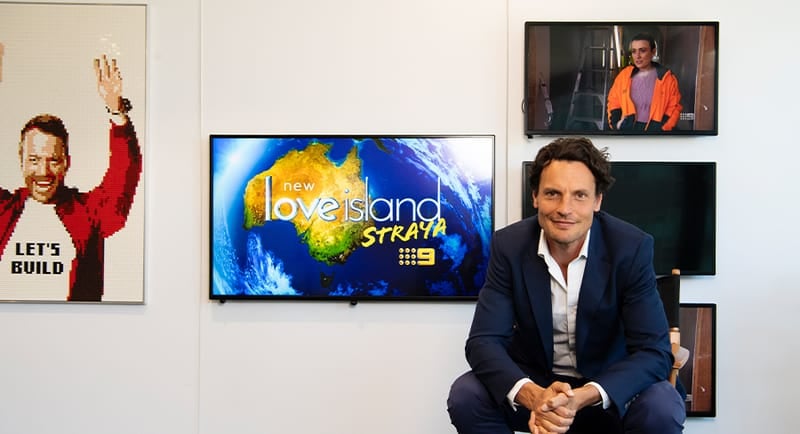With the TV ratings survey coming to a close for another year on Saturday, November 26, results have now started to be released by the free-to-air commercial television companies. This includes Channel Nine, which swept the key demographics in metro markets for the fourth consecutive year.
In 2022, Channel Nine had the highest rating program of the year with the Australian Open Women’s Final – Presentation recording a Total TV audience of 4.1 million.
The combination of the Australian Open’s Women’s Final and the Men’s Doubles Final on Saturday, January 29 gave the Nine Network the highest primetime commercial shares in OzTAM history with People 25-54 (81.2%), 16-39 (84.9%) and Total People (78.6%).
The Block – Winner Announced is the highest rating non-sports program of the year with a Total TV audience of 2.664 million.
Channel Nine also had 16 of the Top 20 programs of 2022 with Total People and 17 of the Top 20 programs with People 25-54 and 16-39, including all five of the Top 5.
Mediaweek caught up with Nine’s Hamish Turner, director of 9Now & Programming, about what these results mean for the company and the future of TV ratings.
“We won everything, except for total people metro. We won everything else. Anything else that is being claimed is either not certified or is a mix-match of different data and stuff that can’t be used. For us, we’ve done this for 13 years, we have a very clear focus of our audience, that’s 25-54s.
“The reason we chose 25-54s is that that’s the most commercially viable audience, the one that has the best revenue yield and results. From a linear perspective, we’ve won that this year. In fact, we’ve also won primary channel, survey calendar, any way you cut it. Our strategy is very much focused on delivering a 25-54 audience in total TV, across both terrestrial and on our BVOD platform 9Now.”

MAFS
When asked about what the key to this result was, Turner pointed to the power of consistency.
“It’s really been about consistency. Throughout the year, we’ve got the two biggest entertainment brands in The Block and Married and First Sight. They bookend our year, and within the year we’ve got really strong brands – from LEGO Masters through to Travel Guides, they’re consistent performers and loved shows.”
Turner continued to point towards the growth and success of 9Now as one of the key takeaways from the report.
“If you look specifically at 9Now, we’ve done a 49% share for the year, I think we’re up to 50+ demographically, so 16-39s. It’s kind of undisputed, you can’t cut those numbers, in any way which doesn’t give us the win there.”
Disputed data and a 52 week survey
The TV industry is known for having creative interpretations of the TV ratings data, which often leads to disputed results. One of these instances has been Channel Seven’s use of claiming demographic wins using national data, a practice that Turner points out some concerns for.
“They tried to jam two different data sources in RegTAM and OzTAM together. I even got a line that was ‘Seven is the most watched network in total people and 16-39s times in both the 2022 OzTAM ratings.’
OzTAM is only Metro, so it’s a real issue in terms of claiming 16-39s when you’re referencing OzTAM, because they definitely didn’t win that.”
When talking about issues in general in regards to the TV ratings survey, Turner said that one change to be considered is if the survey period should be widened.
“The agreement has always been that OzTAM is how you measure success in either survey or calendar. I think what is up for debate is do surveys still make sense, given that we program 52 weeks of the year.
“The advertisers don’t stop wanting to advertise just because the survey is finished. In fact, a lot of the premium rates come post-survey, because you’re leading into Christmas. Compounding that fact is that the way people are consuming is changing, and the distribution of content is changing. It’s shifting from people watching via terrestrial to digital, and as part of the number set now – which isn’t included – is your BVOD platform performance.”
Message to advertisers
When asked about his elevator pitch to advertisers, Turner said that it is all about the key demographics.
“We’ve got a laser focus on 25-54s, we deliver upon that, we want that audience because it delivers both on the terrestrial and BVOD. That is seen through that total TV number that we put out – I think over 550,000 average watched Married at First Sight. The Block was up significantly year on year, and increasingly we are absolutely commissioning based on that cross-platform number.
“That’s where the hard-to-get audiences are, increasingly and in scale, with unduplicated reach. That’s why they’re so important. Our strategy is 25-54s, and delivering them cross-platform.”

The success of Love Island as a digital first program
Love Island Australia made history this year as being the first digital-first program to make the top 30 in the total TV ratings. Turner opined that a part of this success is due to being able to take the show back to an international location.
“It’s had a great run actually, this season is a very strong season – anecdotally, all the fans are loving it. It’s probably why, from a BVOD perspective, we’re up 38% year on year. It’s back in Spain. We had those two years where it wasn’t that aspirational destination, it was pissing down with rain. Seemingly when they get the passport out and head over to Spain, they get up to a bit more fun.”

Get Mediaweek’s full TV ratings coverage here.
See Also: “No matter how you cut it”: Seven’s Warburton and Ross talk TV ratings win
See Also: TV Ratings: How 10 has done things differently as Australia’s youngest FTA network
